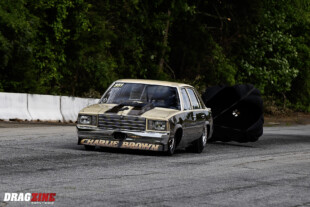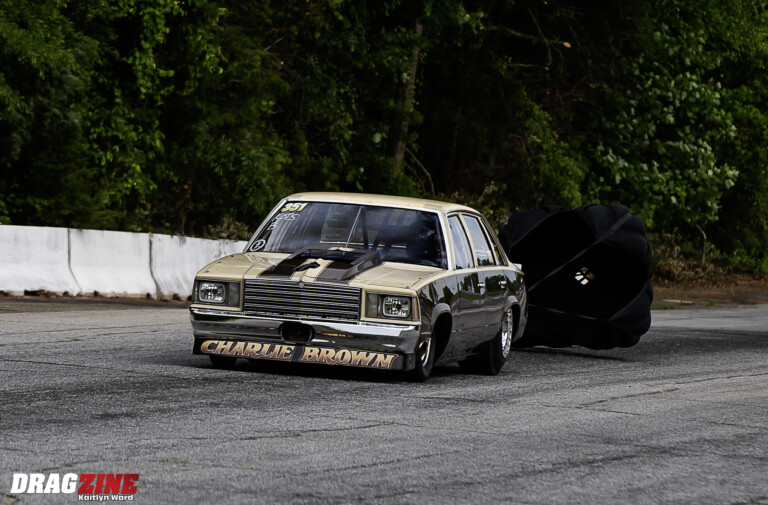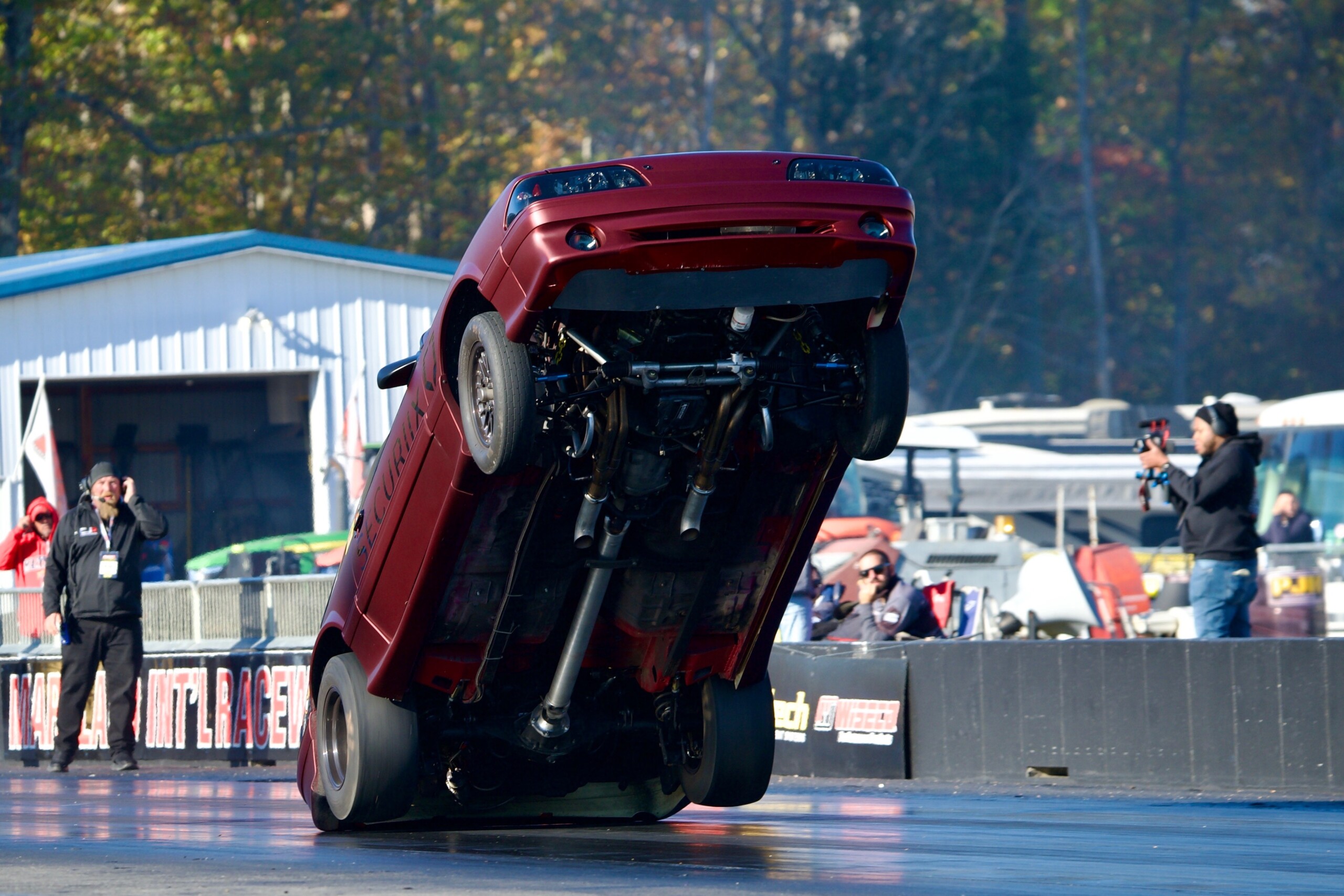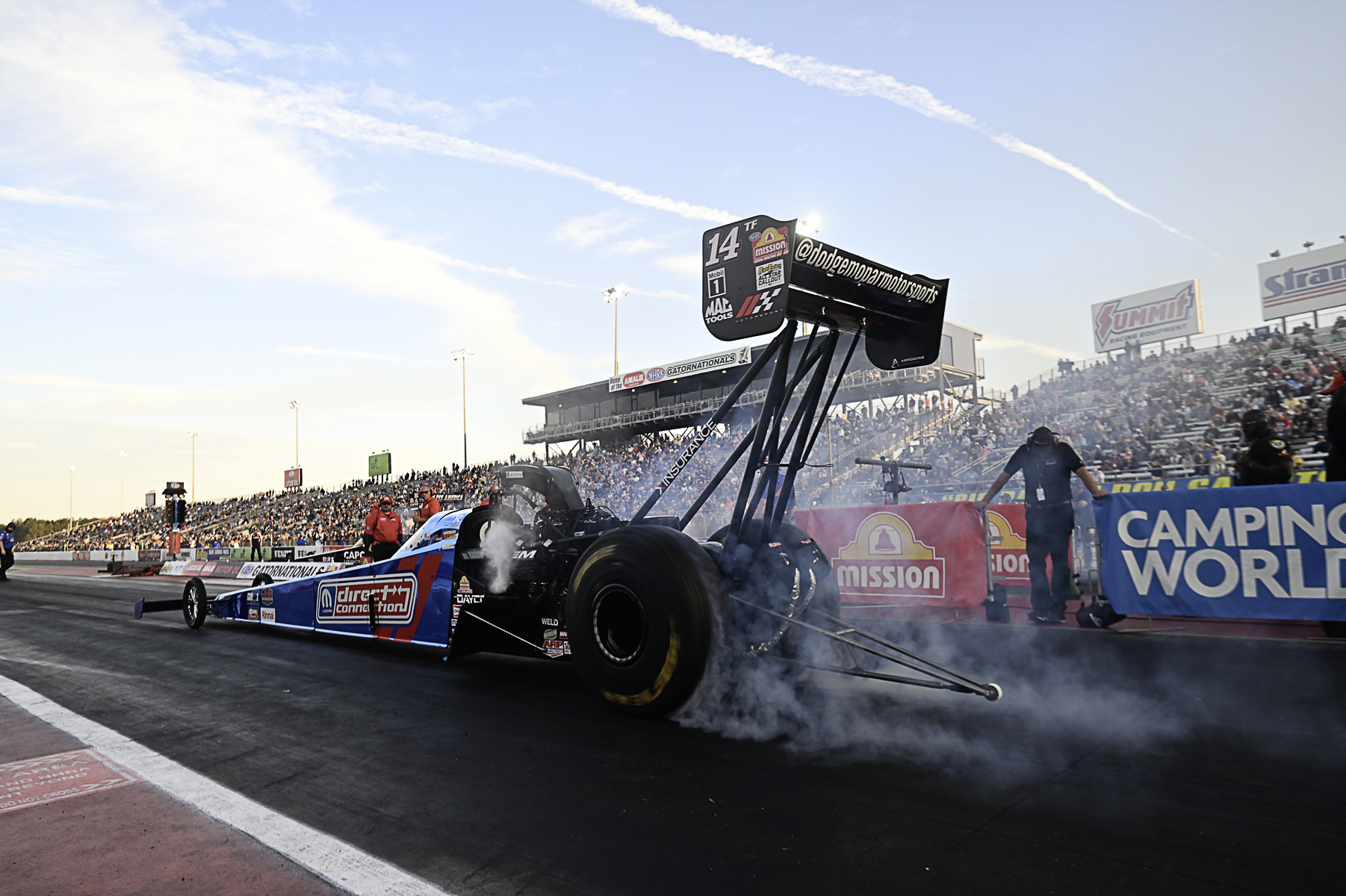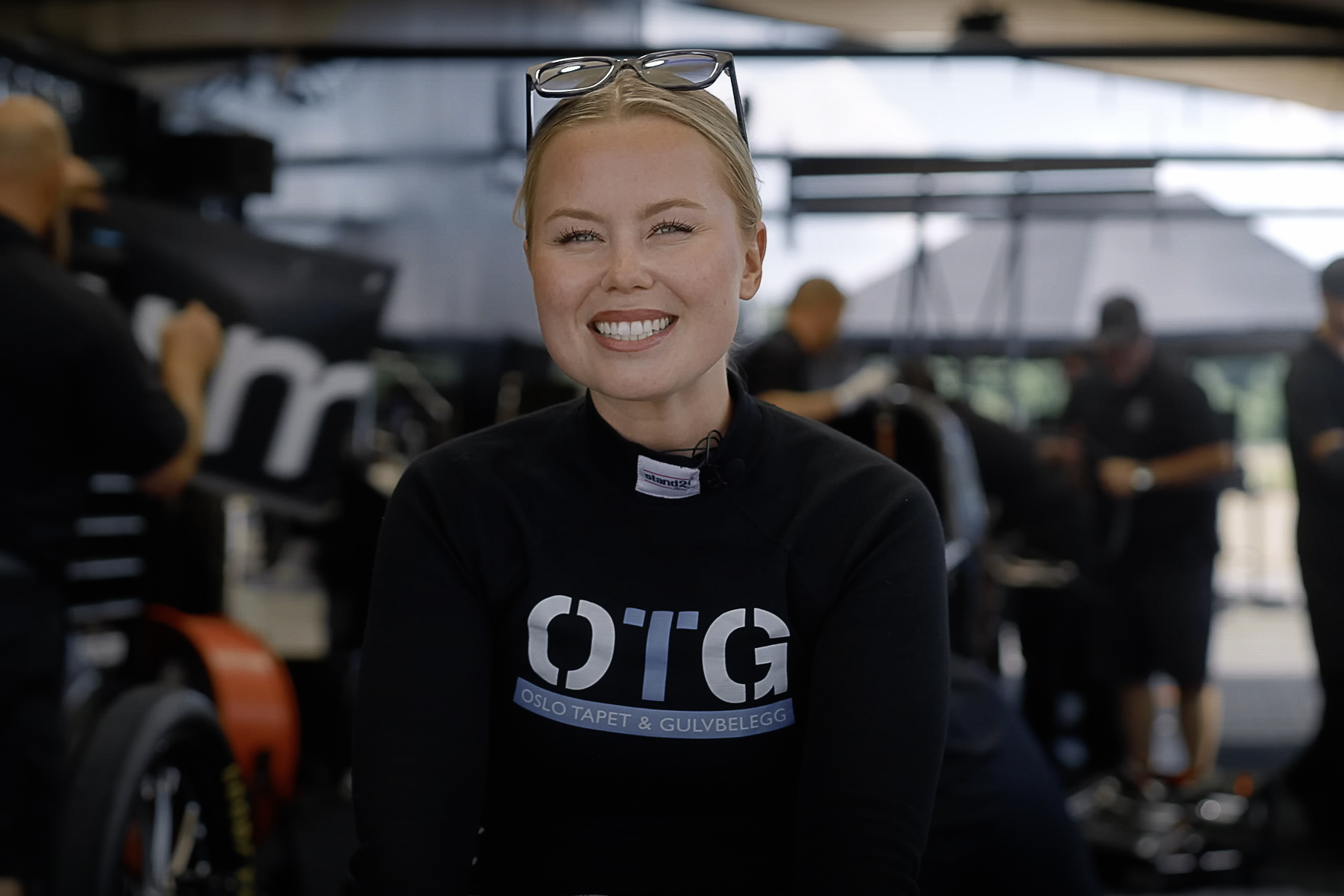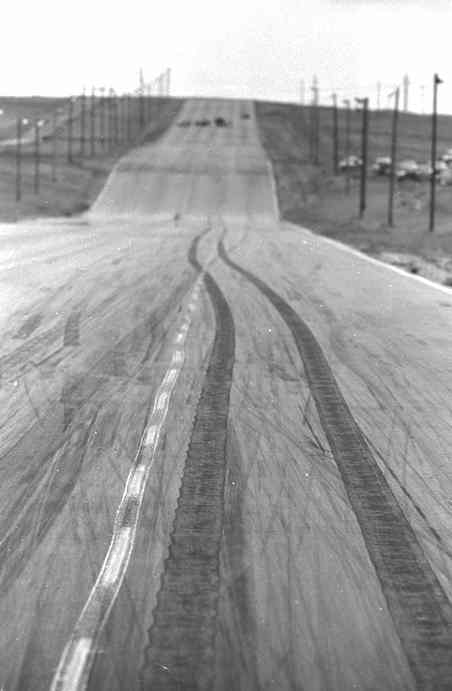
The tire tracks of Alan Bockla, the first racer in Colorado to break 200 MPH, at the Mountain View Dragway. Image credit: Standard 1320
Like everything else in the sport of drag racing back in its heyday, the countless number of drag strips that used to dot the landscape of the country had far more character during that era than they do now. Today’s track can be difficult to discern from one to the next to the untrained eye, but fifty years ago, it seemed that no two were the same, and each and every track had it’s own story to explain it’s unique layout or configuration. And a fine example of a track that you’d never seen built today is the Mountain View Dragway which, befitting of its name, was located in the mountainous area of Erie, Colorado about 10 miles north of the Denver metro area and just West of I-25. As one would expect of the location, the track offered a stellar view of the front rage of the Rocky Mountains.
Now, sure the nearby Bandimere Speedway, built in 1958, has a shutdown area that runs sharply uphill after the finish line, but nothing quite to this magnitude. Not only does it climb after the finish line and stretch on for what seems like a mile up and over the horizon, but looks just like a kids’ carnival slide as it slopes uphill.
Mountain View was sanctioned by both the NHRA and AHRA for a period of time, allowing for the possibility of a front-running racer to set national records in two different sanctioning bodies with a single pass and time card. A gentleman named Albert Broncucie operated the strip with an iron fist. It’s said that the track ran perpendicular to a state road that was in such close proximity to the starting line that hardly enough room was available to turn a dragster around.
If the track’s layout wasn’t interesting enough, Mountain View provided another interesting fact for history’s sake by being the first strip in the Denver area to offer a limited number of covered pit spaces; complete with electrical outlets. Try and find that in this day and age.



